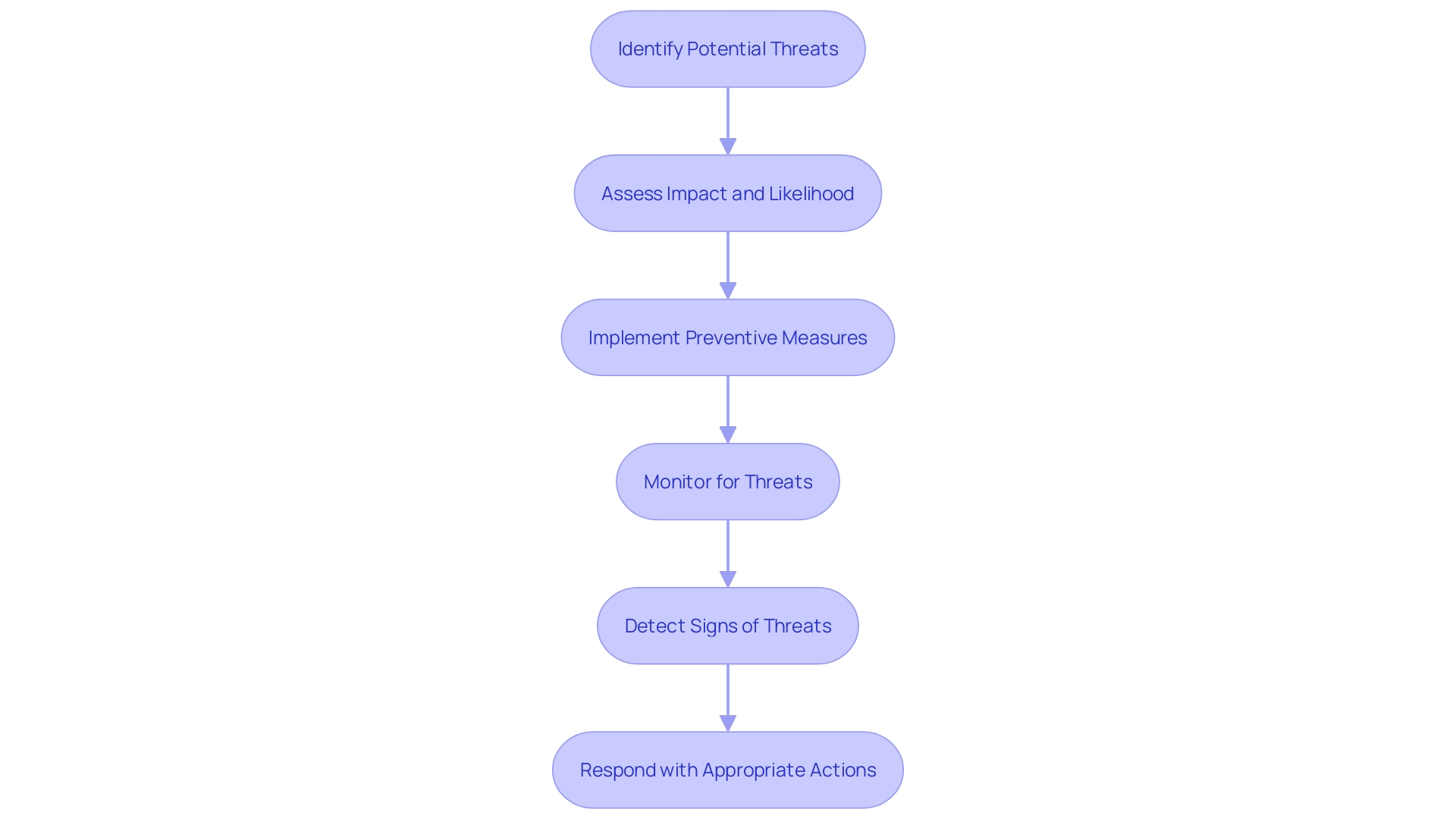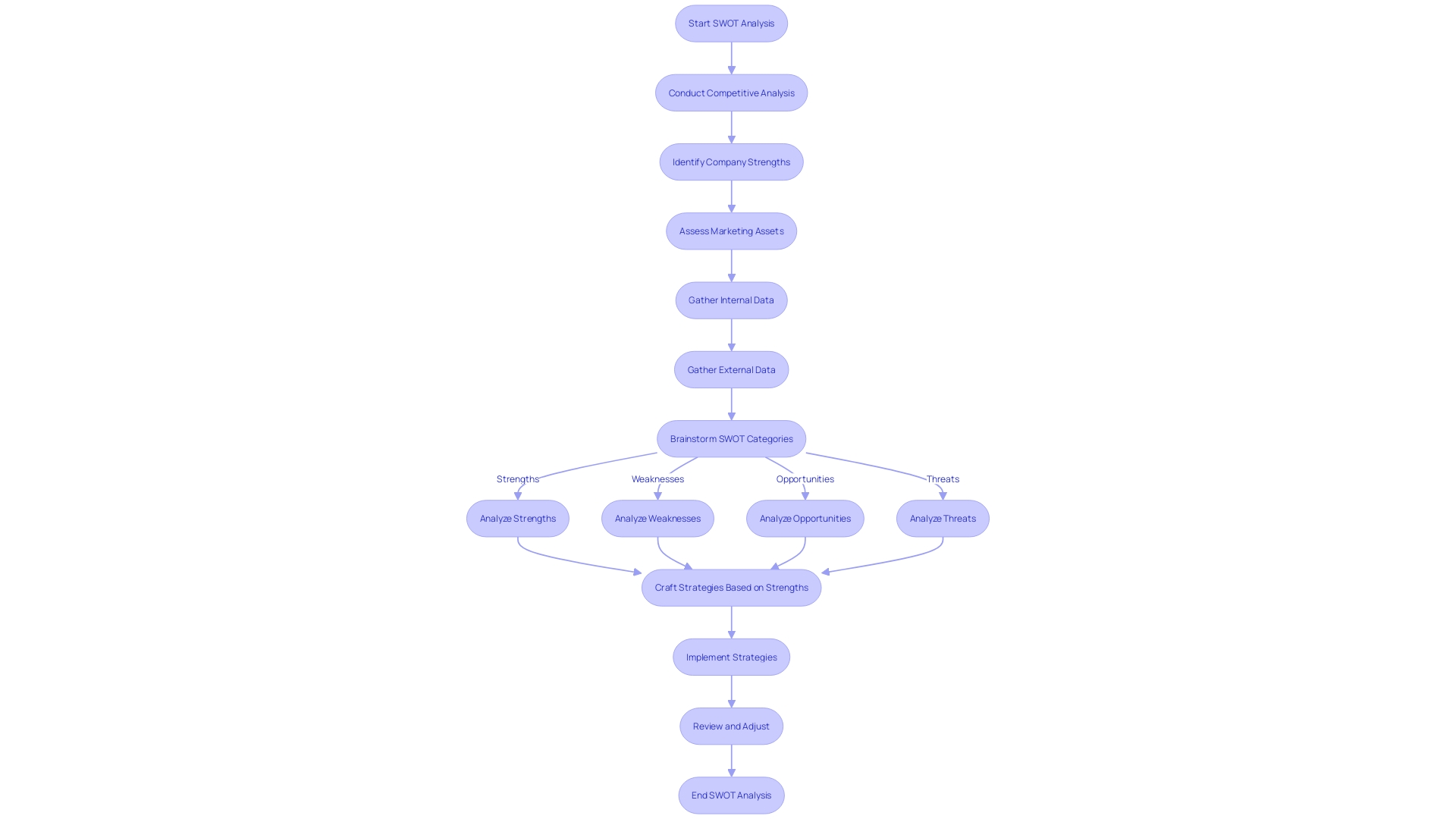Introduction
SWOT analysis is a critical strategic tool that helps organizations identify their strengths, weaknesses, opportunities, and threats. By analyzing these components, businesses can gain valuable insights into their internal environment and external factors, allowing them to develop strategies that leverage their strengths, address weaknesses, and capitalize on opportunities while mitigating risks.
This article will provide a comprehensive understanding of each component of SWOT analysis and guide CFOs in implementing the findings to drive business success. So let's dive in and discover how SWOT analysis can be a compass to navigate the ever-changing business landscape.
Understanding SWOT Analysis Components
SWOT analysis, a pivotal strategic tool, aids organizations in discerning their core competencies and areas of improvement, along with recognizing external factors that present both opportunities and challenges. This analysis is integral for businesses at all stages, serving as a compass to guide their strategic direction.
The cornerstone of SWOT lies in its ability to dissect an organization's internal environment—its strengths, which could range from superior supplier relations to a robust market presence, and weaknesses that require attention. These internal factors are controllable and can be harnessed or mitigated to bolster the company's position.
On the flip side, opportunities and threats exist in the external business landscape. Opportunities might manifest as untapped markets or technological advancements, while threats could include competitive pressures or regulatory changes.
Conducting a SWOT analysis empowers businesses to forge strategies that leverage their unique strengths and circumvent weaknesses, simultaneously exploiting opportunities and insulating against external threats. To initiate this analysis, identifying and cataloging business strengths is essential. These strengths are the attributes that distinguish an organization within its industry—be it through innovative processes, financial robustness, or cutting-edge technological resources. A thorough competitive analysis is also advisable to gain insight into the strengths and weaknesses of competitors. By understanding these dynamics, organizations can navigate their industry with greater confidence and strategic acumen, shaping a future that capitalizes on their inherent advantages and mitigates potential risks.
Strengths: Identifying Internal Advantages
Recognizing and maximizing a business's internal strengths are pivotal factors in securing a competitive edge. Consider Amazon's meteoric rise; despite criticisms and a challenging culture, the company's strategic focus on long-term growth over short-term profits has resulted in a towering market capitalization exceeding $1.4 trillion.
Amazon's ability to thrive across diverse sectors is a testament to its robust internal processes and relentless innovation. To harness such strengths within your own business, begin with a thorough competitive analysis.
Identify what sets you apart—be it superior supplier relationships, market advantages, a dynamic marketing team, or value-added services. These are the internal attributes that are within your control and can drive your company forward.
A SWOT analysis can be instrumental in this endeavor. Start by gathering comprehensive data, including feedback from customers and financial statements, to understand your position.
Brainstorming around this data will help categorize your strengths and weaknesses clearly. This methodical approach simplifies what can be an overwhelming process into actionable steps. Moreover, monitoring and analyzing financial data is critical. It offers insights into cash flow, profitability, and overall financial health, enabling strategic decisions for areas like R&D and marketing. An American Customer Satisfaction Index study underscores the importance of customer satisfaction, revealing a direct correlation between high satisfaction scores and stock market performance. With customer satisfaction recently rebounding in the U.S., focusing on customer-centric strengths could be particularly beneficial in the current climate.

Weaknesses: Recognizing Internal Limitations
Identifying and analyzing a business's weaknesses is a crucial step in fortifying its market position and driving growth. Common weaknesses may encompass a paucity of financial resources, antiquated technology, subpar customer service, unproductive marketing strategies, or insufficient infrastructure.
The case of Toyota's Woven Planet is illustrative; despite a visionary investment in software to standardize the industry, their execution fell short, plagued by overly ambitious software development that didn't align with Toyota's need for immediate, tangible car software features. This underscores the importance of aligning strategy with realistic market assumptions and maintaining an agile approach to management.
As one expert notes, "Your strategy is a theory," and its success hinges on the validity of underlying assumptions, which may falter if not regularly reassessed against market realities. Another key element is developing a listening process to gauge signals from your team and customers, which is instrumental in deciding when to adjust or pivot strategies.
This process is not only about recognizing change opportunities but also about engaging with stakeholders to ensure robust execution of any strategic shifts. Additionally, sales skills are paramount; they're not just for landing customers but also for articulating the logic and benefits of a business decision, demonstrating to investors the potential for a return, and facilitating employee buy-in for new processes. Finally, when considering mergers or acquisitions, it's critical to avoid the pitfall of assuming that complementary business models will automatically create value when integrated. Such transitions require meticulous execution and a clear vision to realize the anticipated synergies.
Opportunities: Capitalizing on External Factors
Navigating the landscape of external factors, businesses can uncover opportunities ripe for growth and success. Emerging markets, evolving consumer behaviors, technological innovations, and shifts in government policies are all potential catalysts for a competitive advantage. For instance, the 'Korea discount' phenomenon positions South Korea's stock market as a potentially undervalued opportunity, where Asia's fourth-largest economy could be a value stock awaiting discovery.
In the wake of market changes, it's imperative to acknowledge and adapt to the current conditions, as emphasized by Will Erlandson of Relevance.com, who suggests pivoting strategies in response to changes, such as those seen during the Covid downturn. Furthermore, understanding the consumer base is crucial from the beginning. Market research is key to identifying demand and market size, which involves gathering demographic data and assessing the potential customer base for your products or services.
Enhancing the travel experience, the U.S. Department of State and Homeland Security are issuing visas at record rates and expanding biometric entry and exit systems, showcasing how public-private partnerships can open up new opportunities. Businesses must remain vigilant, flexible, and informed, as opinions, estimates, forecasts, and financial market trends are subject to change and may not apply universally, as noted by Polen Capital Management. This underscores the importance of aligning strategies with the dynamic market conditions to seize opportunities effectively.
Threats: Mitigating External Risks
Businesses must remain vigilant against external threats that can jeopardize their operations and profitability. One such looming danger is the prevalence of cyber attacks, which have escalated in both frequency and sophistication.
The evolution of cyber threats, from the early computer viruses to the Morris worm, has kept pace with the explosive growth of internet-connected devices and the increasing reliance on IT systems. These advances have amplified the potential damage from cyber attacks, posing serious risks to personal data, operational continuity, and even physical safety.
To combat these risks, it is imperative to adopt a proactive approach to risk management. Learning from the insights provided in 'How Big Things Get Done,' leaders can enhance their risk intelligence by utilizing reliable information, setting aside biases, and consulting with experts.
This approach to anticipating and understanding risks can help in formulating robust strategies to mitigate the impact of external threats. A case in point is the Arab National Bank's (anb) strategic pivot in response to shifts in the banking sector and technological advancements. Recognizing the opportunity to modernize and grow, and undertook a significant digital transformation. This forward-thinking move illustrates how businesses can adapt and thrive amidst external challenges by being proactive and embracing change. As and has shown, the key is to always be forward-looking and ready to evolve operations to meet emerging threats head-on.

Conducting a SWOT Analysis: A Step-by-Step Guide
To embark on a SWOT analysis, begin with a thorough competitive analysis to discern the strengths and weaknesses of your rivals. Identify your own company's strengths, which are positive, internal factors under your control, such as successful internal processes, robust supplier relations, market advantages, dynamic marketing, and a strong online presence. Additionally, assess the assets within your marketing team.
A SWOT analysis is not only pivotal prior to initiating major change or introducing new business projects but also for ongoing assessment of company performance. It is designed to be adaptable to any situation, project, or business. The process starts with gathering comprehensive internal and external data, including financial statements, customer feedback, and industry trends.
This data forms the basis for identifying strengths, weaknesses, opportunities, and threats. Brainstorming around these categories will shape a clear and manageable SWOT analysis, aiding in crafting strategies that utilize organizational strengths, address weaknesses, and respond effectively to the business environment. A SWOT analysis is a strategic planning tool that helps at various business stages, and its results are instrumental in reassessing your business's state and guiding its future direction.

SWOT Analysis Examples Across Industries
Exploring SWOT analysis through various industry lenses provides a rich tapestry of strategic planning in action. In healthcare, the strengths often lie in patient care quality and state-of-the-art medical facilities, while weaknesses might include long wait times or staffing challenges.
Technological industries frequently boast innovative products as their strengths, with the rapid pace of technological change posing both an opportunity and a threat. Retailers may find their strengths in customer loyalty and brand recognition, yet wrestle with the weaknesses of high overhead costs or e-commerce competition.
Within manufacturing, efficient production processes can be a significant strength, whereas reliance on raw materials poses a threat due to potential supply chain disruptions. The essence of a SWOT analysis is to harness internal data such as financial statements, customer feedback, and operational processes, alongside external data like market trends and economic conditions.
For CFOs, this means utilizing the analysis to make informed decisions on allocating funds for various initiatives, ensuring the financial health of the organization. Understanding the competitive landscape is equally crucial, as it helps pinpoint where your company stands out or falls short compared to peers. A step-by-step approach to SWOT involves firstly gathering data to identify the internal strengths and weaknesses, followed by brainstorming to categorize these insights along with external opportunities and threats. This strategic exercise is not just about introspection but also about recognizing the broader market forces at play.
Implementing SWOT Analysis Findings for Business Success
To harness the power of a SWOT analysis, organizations must convert insights into strategic actions that propel business success. The process begins with a thorough understanding of the company's strengths, which could range from robust supplier relations to a strong online presence. These internal factors are the springboard for setting distinct goals and allocating resources where they can have the greatest impact.
For instance, a company might invest more heavily in research and development or marketing initiatives based on the insights gained. Concurrently, weaknesses are addressed by implementing strategies that bolster areas such as customer service or technological infrastructure. Regular monitoring of financial data, including cash flow and profitability, ensures that strategies remain aligned with the business's financial health.
Meanwhile, external factors like market trends and economic conditions are meticulously tracked to spot opportunities for growth or potential threats. This vigilant approach positions businesses to respond swiftly and strategically, turning possible challenges into competitive advantages. The culmination of this process is a business that not only understands its current standing within the industry but also has a clear roadmap for future direction and success.

Conclusion
In conclusion, SWOT analysis is a critical strategic tool that helps organizations identify their strengths, weaknesses, opportunities, and threats. By analyzing these components, businesses gain valuable insights into their internal environment and external factors, enabling them to develop strategies that leverage strengths, address weaknesses, capitalize on opportunities, and mitigate risks.
To implement the findings of SWOT analysis successfully, organizations should convert insights into strategic actions. This involves identifying business strengths, conducting a thorough competitive analysis, and addressing weaknesses through targeted strategies.
It is essential to remain vigilant against external threats such as cyber attacks and adapt to changing market conditions. By leveraging strengths and addressing weaknesses effectively, businesses can position themselves for long-term success.
Regular monitoring of financial data and staying informed about market trends are crucial for strategic decision-making. SWOT analysis serves as a compass to navigate the ever-changing business landscape. In summary, SWOT analysis provides CFOs with a comprehensive understanding of their organization's internal and external factors. By leveraging strengths, addressing weaknesses, capitalizing on opportunities, and mitigating risks, businesses can drive success in a dynamic business environment. With clear strategies in place based on SWOT analysis insights, organizations can make informed decisions that propel business growth and achieve their goals.




